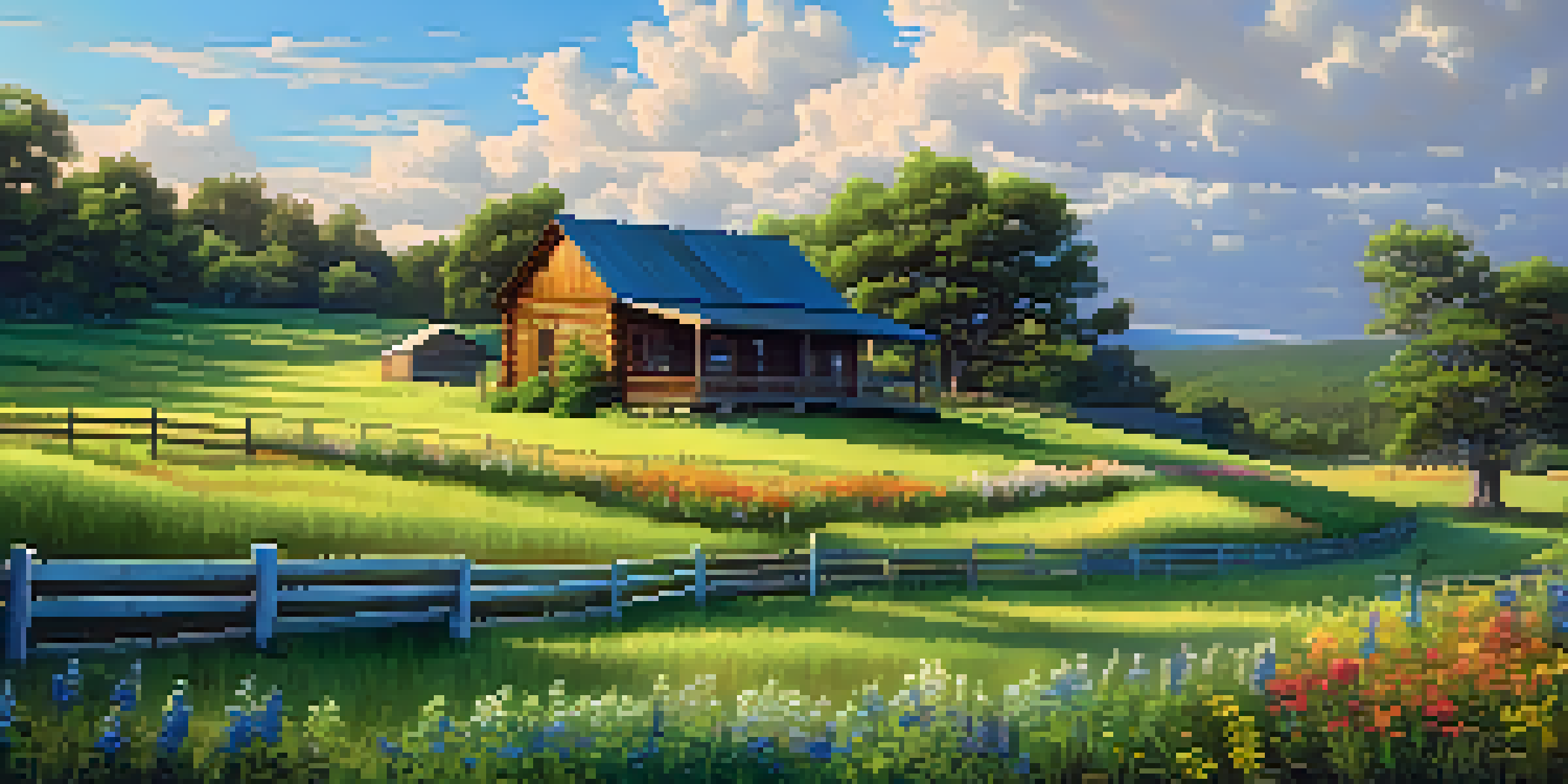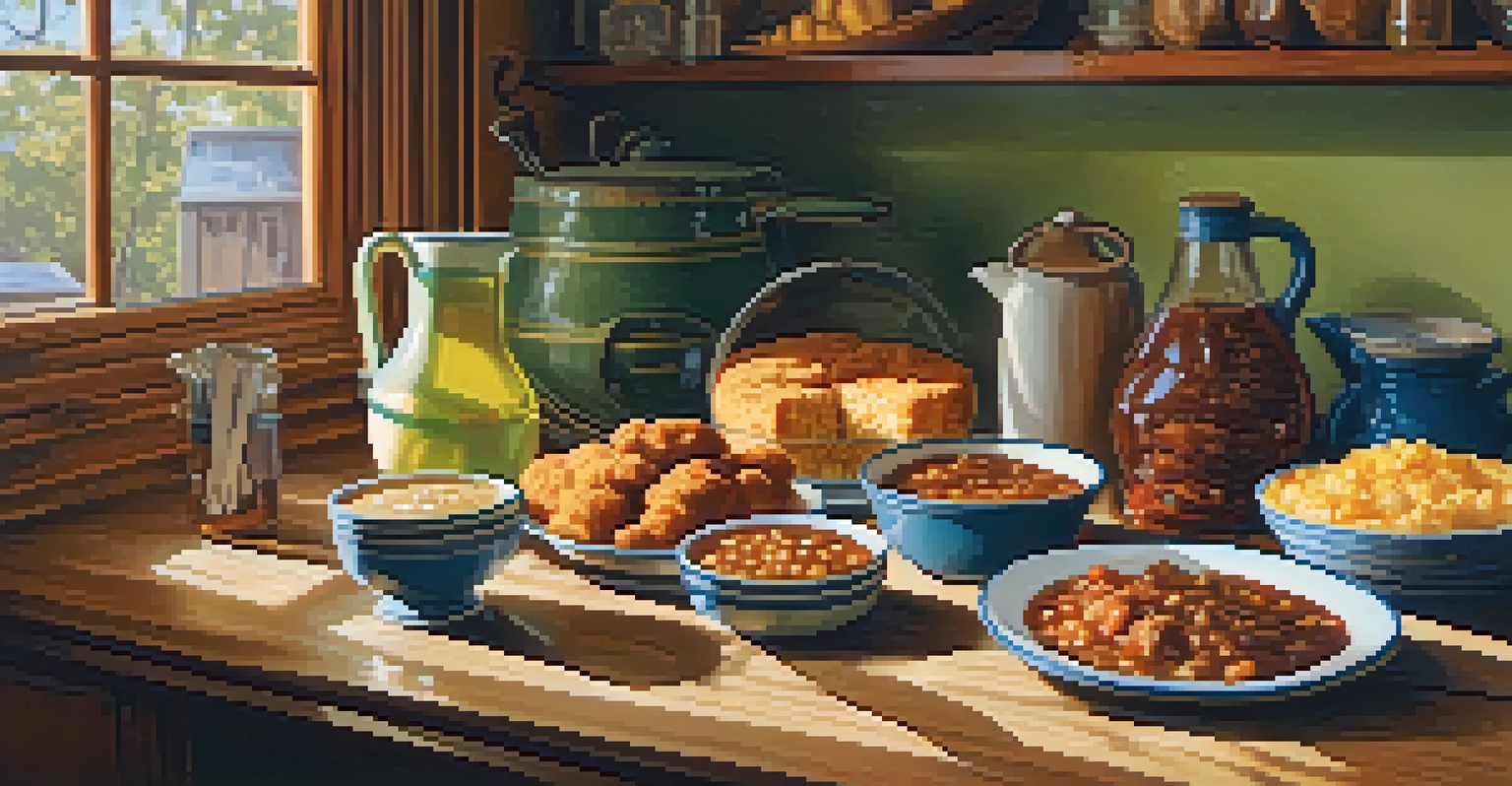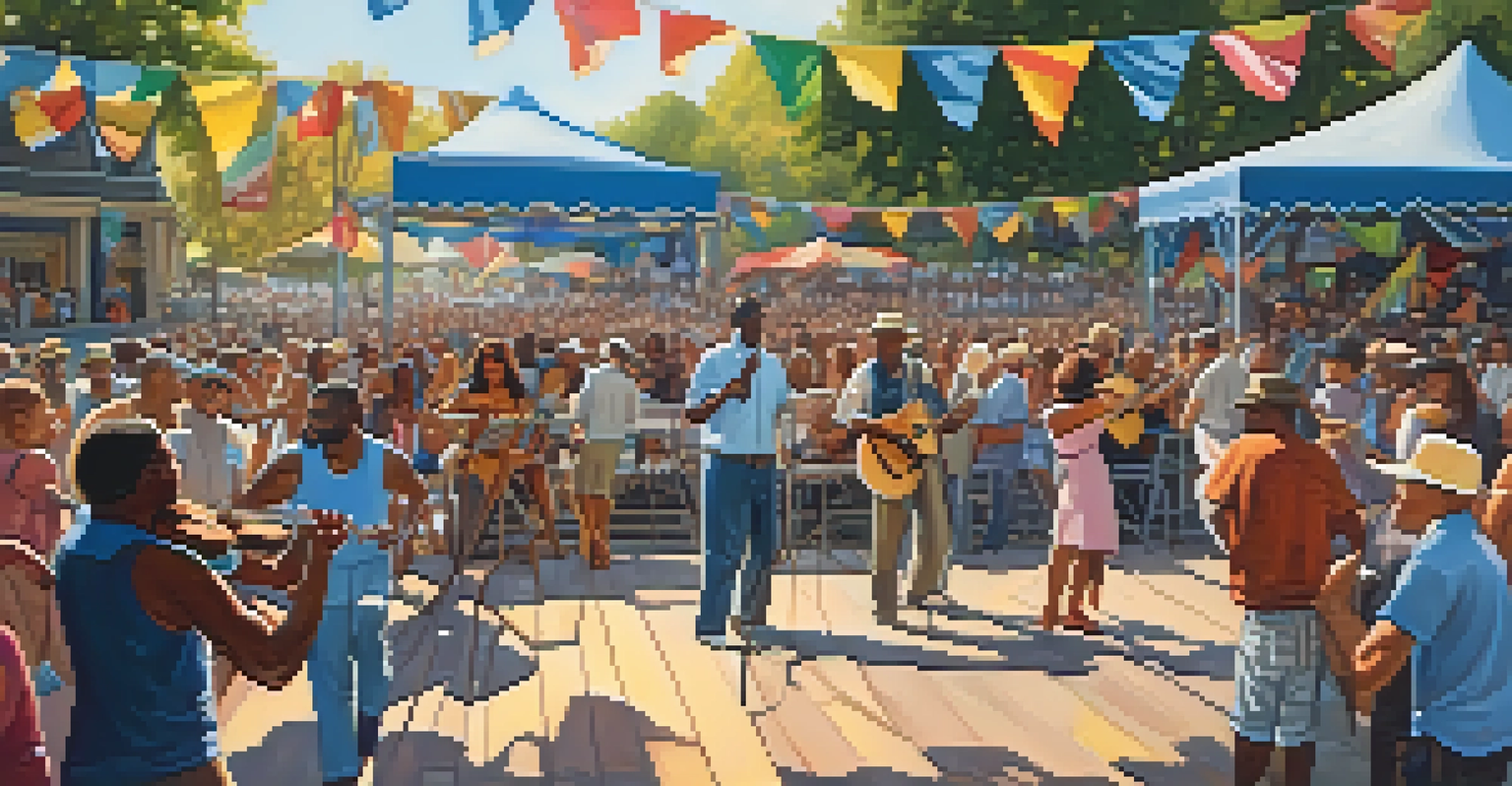Artistic Expressions in Southern Cultural Heritage

The Roots of Southern Artistic Traditions
Southern artistic traditions are deeply rooted in the region's history. From Native American art to the influences of African, European, and Caribbean cultures, these traditions create a vibrant tapestry. Each community contributes unique elements, reflecting their stories and experiences. This blend of cultures offers a rich foundation for artistic expression that continues to evolve today.
Art is the most beautiful of all lies.
Much of Southern art is inspired by the landscape, with its lush forests, rolling hills, and vibrant flora. Nature acts as both a muse and a medium, influencing everything from painting to pottery. Artists often draw upon regional materials, incorporating local textures and colors to create their works. This connection to the land not only enhances the aesthetic but also roots the art in the Southern identity.
As we explore Southern artistic traditions, it’s essential to acknowledge the stories told through these expressions. Whether it's through folk tales depicted in visual arts or the narratives woven into music, each piece serves as a testament to the resilience and creativity of Southern communities. This storytelling aspect is what binds the region's diverse cultures together, fostering a sense of continuity.
The Role of Music in Southern Culture
Music is perhaps one of the most profound artistic expressions in Southern culture. Genres like blues, country, and jazz originated in the South, each telling the stories of the people and their struggles. The rhythms and melodies often reflect the hardships and joys of life, serving as a powerful outlet for emotions. This rich musical heritage is not only celebrated locally but has also influenced artists worldwide.

Southern music is characterized by its improvisational spirit and emotional depth. For instance, blues musicians often share their personal narratives through heartfelt lyrics, resonating with listeners on a deeply emotional level. Country music, on the other hand, often recounts tales of love, loss, and everyday life, connecting with audiences through relatable themes. This blend of personal expression and collective experience is what makes Southern music so compelling.
Southern Arts Reflect Diverse Cultures
Southern artistic traditions are a vibrant blend of Native American, African, European, and Caribbean influences that tell the stories of the region's communities.
Festivals and gatherings play a crucial role in preserving and promoting Southern music. Events like the New Orleans Jazz & Heritage Festival showcase the region’s musical diversity and foster community. These celebrations not only bring people together but also help new generations appreciate their cultural heritage. Through music, the South continues to share its stories and traditions, ensuring they remain alive for years to come.
Visual Arts: From Folk to Fine
Visual arts in the South encompass a wide range of styles, from folk art to contemporary pieces. Folk art, often created by self-taught artists, reflects the everyday life and traditions of Southern communities. These artworks frequently utilize found materials and vibrant colors, giving a unique glimpse into the cultural identity of the region. The accessibility of folk art makes it relatable and cherished among many.
The art of communication is the language of leadership.
On the other hand, fine art in the South has also flourished, with artists gaining recognition on national and international stages. Galleries and museums across the region showcase a variety of mediums, from painting to sculpture, often rooted in Southern themes. Artists like Georgia O'Keeffe and Andrew Wyeth have drawn inspiration from Southern landscapes, adding to the rich narrative of the region’s art history. This blend of folk and fine art creates a diverse artistic landscape.
Art festivals and exhibitions are crucial for promoting visual arts in the South. Events like the Southeastern Center for Contemporary Art provide platforms for artists to showcase their work and engage with the community. These venues not only highlight emerging talents but also celebrate established artists, fostering a sense of pride in Southern artistry. Through visual arts, the South captures its essence, allowing stories to unfold on canvas and beyond.
Crafts and Traditional Skills in the South
Craftsmanship is an integral part of Southern cultural heritage, showcasing traditional skills passed down through generations. From quilting to pottery, these crafts reflect the ingenuity and creativity of Southern artisans. Each piece often carries a story, whether it’s a quilt made for a family celebration or pottery inspired by local landscapes. This hands-on approach to art fosters a deep connection to history and community.
Many Southern crafts are rooted in utilitarian purposes, evolving over time into forms of artistic expression. For example, the art of basket weaving has been practiced for centuries, with each design telling a tale of its origin. Today, these crafts are celebrated not only for their beauty but also for their cultural significance. Artisans often participate in local markets and festivals, keeping these traditions alive and accessible.
Music as a Southern Identity
Genres like blues, country, and jazz not only express personal and communal narratives but also showcase the emotional depth and improvisational spirit of Southern culture.
Moreover, workshops and classes offer opportunities for individuals to learn these traditional crafts. By engaging in these activities, participants not only develop new skills but also connect with their cultural heritage. This revival of interest in crafts is a testament to the enduring value of Southern traditions. Through craftsmanship, the South continues to foster creativity and community spirit.
Literature: The Voice of Southern Experience
Southern literature is a powerful form of artistic expression, capturing the complexities of life in the region. From the works of authors like Mark Twain to contemporary voices such as Jesmyn Ward, Southern literature often explores themes of identity, race, and resilience. These narratives are rich with detail, painting vivid images of Southern life and its challenges. Through storytelling, authors invite readers to experience the South in all its beauty and struggle.
The Southern Gothic genre stands out for its unique blend of dark humor and social commentary. Writers like Flannery O'Connor and William Faulkner delve into the intricacies of the human condition, often highlighting the region's historical context. Their works challenge readers to confront uncomfortable truths about society while engaging with the intricacies of Southern life. This genre, in particular, has shaped the literary landscape, leaving a lasting impact.
Moreover, literary festivals and book fairs celebrate the rich tapestry of Southern writing. These events bring together authors, readers, and aspiring writers, fostering a vibrant literary community. They provide a platform for discussions about cultural identity and the role of storytelling in shaping society. Through literature, the South continues to share its narrative, ensuring that its voices resonate far beyond its borders.
The Influence of Southern Cuisine as an Art Form
Southern cuisine is often referred to as a form of artistic expression, blending flavors and techniques that tell a story. Dishes like gumbo, cornbread, and fried chicken not only tantalize the taste buds but also reflect the region's diverse cultural influences. Each recipe carries with it a history, often rooted in community and family traditions. This culinary art form fosters a sense of belonging and identity among those who partake in it.
The art of Southern cooking goes beyond just the food; it encompasses the entire experience of gathering and sharing meals. Family dinners and community potlucks create opportunities for storytelling and connection, reinforcing cultural ties. Chefs and home cooks alike take pride in their culinary heritage, often infusing traditional recipes with their own creative twists. This evolution of cuisine keeps the art of cooking dynamic and relevant.
Culinary Arts Unite Southern Communities
Southern cuisine serves as a dynamic form of artistic expression, blending flavors and traditions while fostering connection and cultural identity through shared meals.
Food festivals and culinary events highlight the importance of Southern cuisine as an art form. These gatherings celebrate local ingredients and showcase the talents of Southern chefs, allowing the community to engage with their food culture. By promoting local dishes and food traditions, these events foster appreciation for the rich culinary landscape of the South. Through cuisine, the South shares its culture, creating a delicious bridge between generations.
Preserving Southern Artistic Heritage for Future Generations
As Southern artistic expressions continue to evolve, preserving this heritage is essential for future generations. Institutions like museums and cultural centers play a vital role in safeguarding these traditions. By curating exhibits and providing educational programs, they ensure that the stories and skills of the past are not forgotten. This commitment to preservation fosters a deeper understanding of the region's cultural identity.
Community initiatives also contribute to the preservation of Southern artistic heritage. Programs that teach traditional crafts, music, and storytelling empower individuals to embrace their cultural roots. These initiatives often bring together diverse groups, fostering a sense of unity and shared identity. By engaging in these activities, younger generations can appreciate the richness of their heritage while considering their own creative expressions.

Moreover, digital platforms and social media have opened new avenues for sharing Southern artistic expressions. Artists and creators can showcase their work online, reaching broader audiences and sustaining interest in Southern culture. This blend of tradition and modernity allows the unique aspects of Southern heritage to thrive in an ever-changing world. Through these efforts, the South's artistic legacy will continue to inspire and resonate for years to come.